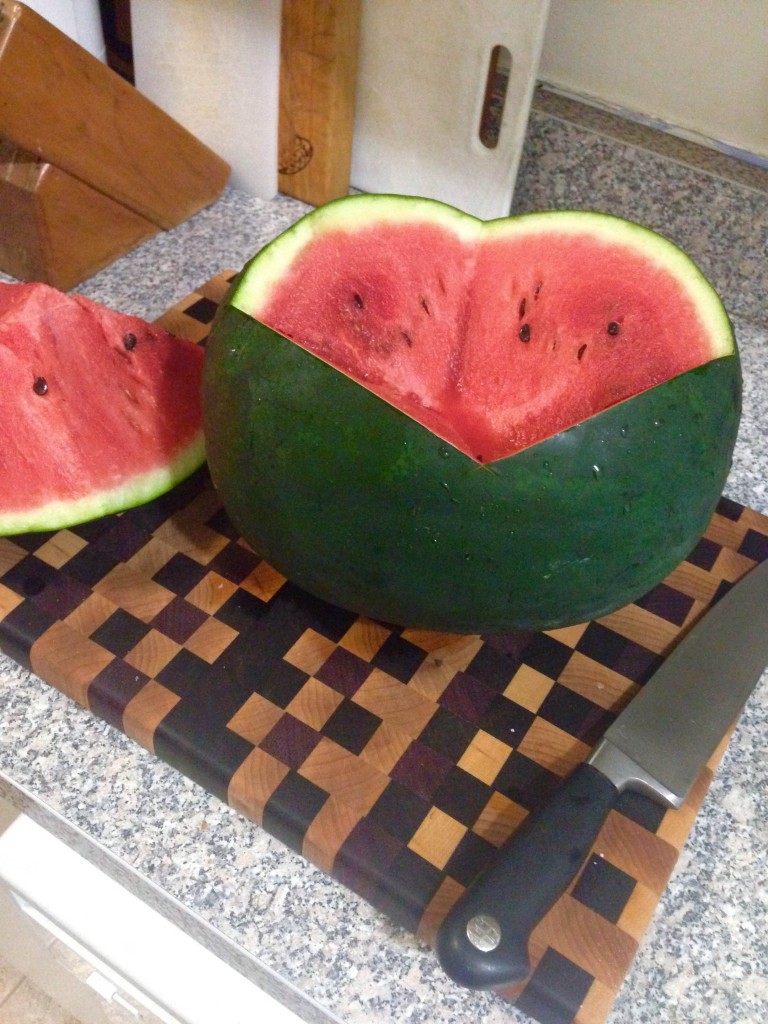Getting the Balance Right For Preserving Fruit in Booze
All photos by Colleen Newvine. I love shopping at farmers' markets this time of year, with the abundance of colors and smells beckoning me to buy now -- NOW! -- because harvest time is fleeting.
Because I also love a cocktail that features fresh fruit tastes, infusing is a logical way to put my overly enthusiastic shopping to use and to enjoy some of those market treats a bit longer.
I’ve long enjoyed infused booze drinks and they seemed pretty straightforward. I’d seen the lovely glass dispensers at bars, like the one at Pierre Maspero’s in New Orleans where layers of olives, onions, sun-dried tomatoes and green beans bathe in vodka that’s borne for bloody marys. How hard could it be?
I tossed a few hot peppers into a bottle of Crop Organic tomato vodka and looked forward to a pleasantly spicy kick in our next bloodies. Instead, because I left the peppers indefinitely as I assumed these bars did, I ended up with an undrinkably hot mistake.
Time for some research. After spending some time studying up on infusions, I upped my game. I learned:
- Start with a midrange alcohol – if it’s nasty on its own, no fruit will help, and if it’s exquisite alone, why mess with it?
- Monitor the flavor development and remove the infused goodies when you get to a point you like.
- Strain the infused alcohol to get out all the bits and pieces, which could either keep intensifying the flavor or start to ferment.
Many beginners apparently start with a neutral spirit – vodka, brandy, unaged whiskey, blanco tequila or white rum – and add a single element like cherries, peaches or cucumber.
Instead, I started with a goal in mind. I think a French 75 with Cognac is one of the most perfect cocktails on its own, but I imagined how it might be even better, so I tossed fresh strawberries into Paul Beau VS Cognac, then replaced the strawberries with split vanilla beans.
Because I love aged rums, I decided to upscale a Midwestern summer classic. I infused rum that would eventually get dumped into a chilled watermelon for summer dinner party dessert. I added cucumbers to Rum Dzama, then pulled them out and added vanilla beans. Finally I poured the rum into a watermelon I’d opened and scooped it all out, sort of like a jack-o’-lantern.
Both were bright, refreshing, slightly surprising flavor combinations.
I infuse my ingredients one at a time – strawberries and cucumbers each took a few days to reach the intensity I liked, while vanilla got there in less than a day, so I find it helpful to monitor each one separately.
A friend gifted me a Porthole infuser, designed for the Chicago cocktail bar The Aviary, and the beautiful recipe cards that come with it call for infusing multiple fruits, spices, herbs and flowers with a full mixologist-level blend of boozes. I trust that the results will be spectacular, but I want to work up to combinations that complex.
London bartender Lottie Muir’s lovely book, “Wild Cocktails from the Midnight Apothecary” lists adventurous mixes like wild fennel, fig, bergamot and star anise rum, along with simpler concoctions like wild cherry rye whiskey and lavender gin. She also explains that she uses the word "infusion" when rapid heat is used to extract flavors, while "maceration" is a cold process. I understand why bars don’t tempt patrons to go seventh-grade boy after a few drinks and typically use the word "infusion" instead of "maceration."
If you’re looking for inspiration on what to add to which alcohol, try recreating a drink you already know you like. If you’re ready to start combining new flavors, Niki Sengnit’s “The Flavor Thesaurus” is a comprehensive resource on how ingredients do or don’t pair. The website Boozed and Infused lists dozens of pairing ideas.
I think of infusion recipes as broad concepts, loose inspiration to mix flavors in whatever proportion makes my palate happy, a la Mark Bittman’s summer salads.
I start with half a 750ml bottle of liquor, leaving the other half unadulterated in case something flops. I pour the booze into a clean, clear jar, then add enough cleaned, sliced fruit to come up about halfway in the alcohol. I taste every few hours to see how it’s developing and strain when I get a distinct flavor that doesn’t overpower the alcohol. If you add more fruit or riper fruit, it might develop faster, so the proportions and timing vary.
I was surprised that infusing strawberries in Cognac for two days completely pulled their color out. I was left with a beautiful blush-toned Cognac and sad, white strawberry slices. I think infusing is about making delicious alcohol, not great-tasting fruit, so I pitch the fruit when I’m done. If you want boozy fruit to top your ice cream or to garnish cocktails, check out Amanda Schuster’s recent pointers on preserving fruit in alcohol.
Found your favorite combination? Tell us about it in the comments!


